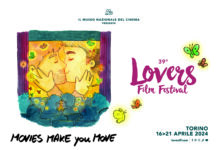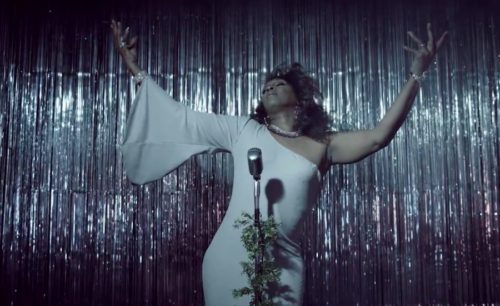On Sunday, October 21st, a New York Times headline announced that “‘Transgender’ Could Be Defined Out of Existence Under Trump Administration.” According to a leaked memo, the Department of Health and Human Services is considering proposing a legal redefinition of sex as strictly binary––that is, “male” or “female”––and assigned at birth. In addition to wide-ranging effects on health care, employment, education, and housing, the proposition would likely lead to increased physical and emotional abuse against trans people.
In his Teen Vogue piece about the memo, ACLU staff attorney Chase Strangio wrote about his anger, not just at the Trump Administration, but at the coverage, noting that the Times led with “a flashy headline designed for clicks. It worked, but it also hurt. It hurt because I’m not alone in my belief that the Times has contributed to the peril of trans people by playing into the idea that our existence is up for debate. I consider the Times to be the worst offender in terms of mainstream publications airing think-pieces by cisgender people about the contrived ‘risks’ to recognizing the humanity of trans people and our legal rights.” In an argument between those who think trans people do exist and those who think they don’t and shouldn’t, platforming the latter means facilitating hate speech under the guise of liberal democracy. This biased media coverage is especially dangerous when, as journalist Harron Walker pointed out, “the vast majority of Americans say they don’t know any trans people in real life, so media representations play an outsize role in shaping how cis people think of us.”
If you’re looking for organizations to give to, we stand by the Trans Law Center, the Trans Justice Financing Project, and the Sylvia Rivera Law Center. If you want to respond within the art world, support living trans artists. Achieving financial stability as an artist is notably difficult; if you’re trans, and especially if you’re a black or brown trans woman, this is exceptionally true, not least because of employment discrimination and the cost of gender-affirming surgeries, many of which aren’t covered by insurance. And even those who have “made it” are always at the whim of an art world in which transness is just a trend that could always go out of style. We wrote about some of our favorite trans artists below, but the list is incomplete. There are far more brilliant trans artists than could ever be included in this or any piece. And while the artists mentioned are trans, their art is about so many things in addition to transness, such as the prison industrial complex, nightlife, protest signage, romance, blackness, and friendship.
JULIANA HUXTABLE

JulianaJuliana Huxtable, image via Instagram
Juliana Huxtable’s 2017 solo at London’s Project Native Informant gallery looked at white skinhead aesthetics (which is a mishmash appropriation of Jamaican and UK working-class cultures). “A Nazi shopping trip to a Ben Sherman and Fred Perry Sample sale in Paris” read one of ten panels throughout the gallery. Another noted that how both Antifa and classic skinheads “refuse to cede the meaning of the Fred Perry brand to the far-right in the same way that one might fight for the liberation of an occupied space.” Huxtable’s writing began to go viral on Tumblr in 2012, while she was working as a legal assistant at the ACLU’s Racial Justice Program after graduating from Bard College, as did her portraits, which experimented with fashion and Nuwaubian imagery. After leaving the ACLU, Huxtable began DJing, frequently integrating her poetry into mixes.
At this point, it’s hard not to describe Huxtable’s practice without being breathless: she joined the art/music collective House of Ladosha; started the nightlife venue Shock Value; began modeling for fashion brands such as DKNY, Eckhaus Latta, Chromat and Kenzo; and in 2015, she was invited to participate in the New Museum Triennial (a Vogue headline later described her as the “Star of the New Museum Triennial”). Her first book, a poetry collection titled Mucus in My Pineal Gland, was published in 2017. “Bound in body. Gagged by the Present” reads a line from a poem titled HERE ARE CERTAIN FACTS THAT CANNOT BE DISPUTED.” Huxtable’s 2017 solo show at Reena Spaulings looked at online conspiracy theories.
WU TSANG

Image via Instagram
Tsang’s breakout movie, WILDNESS (2012), was narrated not by a person but by the Silver Platter, a working-class Latinex gay bar where people would come to feel safe, have fun, and be themselves. In the story, Tsang, a Chicago-transplant, begins hosting gay parties there, which end up attracting a whiter, wealthier crowd. The movie takes us through the gentrification of nightlife and communities that form and fall apart within the lifeworld of the club, foregrounding the necessity and impossibility of utopia under racial capitalism. In Girl Talk (2015), which played at New Museum’s “Trigger: Gender as a Tool and a Weapon,” Fred Moten––poet, theorist, and one of Tsang’s frequent collaborators––dances in slow motion, sunlight flowing through the crystals on his hat and cape. As programmer Rachael Rakes pointed out in a 2015 review, “The silliness and amateur nature of the performance at times renders it less an exploration of identity shifting than observation of the collaboration.” Among other things, Tsang recently released ALL IT TOOK (2017), starring singer Kelela, and received a 2018 Macarthur Genius Grant. Her films and artworks have been presented in festivals, broadcast, and art exhibitions around the world, including MoMA, Guggenheim, New Museum, and the Whitney, and has been written up in the New York Times, The New Yorker, Artforum, Dazed, and Vogue, among others.
TOURMALINE

TourmalineTourmaline, image via Instagram
Trans people are often framed as a recent trend––they aren’t, of course. Tourmaline’s work fights back against this narrative by foregrounding generations of black and brown trans women whose activism and art contributed to the so-called trans “moment.” The video Happy Birthday, Marsha!, made in collaboration with Sasha Mortzel, portrays the lives of Sylvia Rivera, Marsha P. Johnson, and the Street Transvestite Action Revolutionaries (or STAR), who started the Stonewall Riots in protest against regular police raids. Eschewing documentary and news imagery, Happy Birthday, Marsha! is dreamy, beautiful, and lush, as is Atlantic is a Sea of Bones (2017), a sci-fi short inspired by interlocking legacies of anti-Black extraction from the Middle Passage, HIV-criminalization, to the culture industry.
As Tourmaline wrote in an artist statement for Atlantic is a Sea of Bones, “I have a deep desire to show how things that we are taking for granted as mundane are deeply beautiful. Everyday beauty is what feels really compelling, especially meeting people whose stories and lives have often been pushed to the background.” Hierarchies of celebrity––in which some people are treated as inherently more beautiful and valuable than others––is a carceral logic and can never fight a carceral state. Tourmaline is the former membership director at the Sylvia Rivera Law Project and former director of the Welfare Organizing Project at Queers for Economic Justice (QEJ), and is currently Activist-in-Residence at Barnard College. Her work has shown at the New Museum, BAM, and Visual AIDS, among others.
TUESDAY SMILLE

Tuesday Smillie, image via Haverford CollegeTuesday Smillie is perhaps best known for her large-scale, carefully sewn textile protest banners, which eschew the often necessary bluntness of protest signage for elliptical, poetic messages. “The razor blades we’ve swallowed will cut us up again, as we cough them up to cut each other” reads a linen-colored banner made of multi-layered swatches; the banner is USA-shaped, with two burnt orange swatches sewn over a swollen Florida. This “rejection of heroic materials and the embrace of crafts and other feminized creative activities,” as Johanna Fateman wrote in Artforum, “intentionally [recalls] and [updates] a key triumph of the ’70s feminist art movement.”
“Reflecting Light Into the Unshadow,” Tuesday Smillie’s 2018 solo show at NYC’s PARTICIPANT INC., took Ursula Le Guin’s 1969 sci-fi novel The Left Hand of Darkness as a starting point. Le Guin’s book takes place on Planet Gethen, where an androgynous human population only develop gendered, sexual characteristics based on their desires when they go into heat. Smillie depicted the book’s various covers in a series of watercolors in addition to sewn and painted signage while noting that the book’s gender politics are often also outdated (e.g. repeated use of “he/him” pronouns for androgynous characters), eschewing political purity for a willingness to make and be held accountable for one’s mistakes. Smillie has shown at the New Museum, Artists Space, and Leslie Lohman, among others, and was inaugurated as the first MOTHA Resident Artist at the Museum of Transgender Hirstory in 2014.
HARRY DODGE

HarryHarry Dodge, image via his website
Harry Dodge, along with Silas Flipper of the punk dyke band Tribe 8, co-founded a cafe called The Bearded Lady in San Francisco in the early nineties. The cafe was “located on 14th Street before it was as gentrified as it was now,” wrote a former patron. “You didn’t have to have money to get in…. An active sensitivity to the politics of space and pooling resources together, to make things happen, was more what brought people together.” Dodge and Flipper would go on to co-direct By Hook or By Crook (2001), which premiered at Sundance in 2002 and garnered five Best Feature awards. The movie is “a buddy film that chronicles three weeks in the life of a handsome, gender-bending, small-town butch with a nagging messiah-complex,” to quote Dodge’s website. “Emotionally defeated, since the death of her father, Shy heads to the big city to sink herself into a ‘life of crime’ when she is distracted by Valentine, a deliriously expressive, wise-acre adoptee on a misguided search for her birthmother.” Dodge also describes the movie as an “anti-authoritarian tale of friendship.” Since then, Dodge’s solo and collaborative work has been exhibited at many venues nationally and internationally, including the New Museum, MOCA, the Whitney, and the Hammer. Dodge also has an upcoming solo show, “Works of Love,” at JOAN in Los Angeles.






























